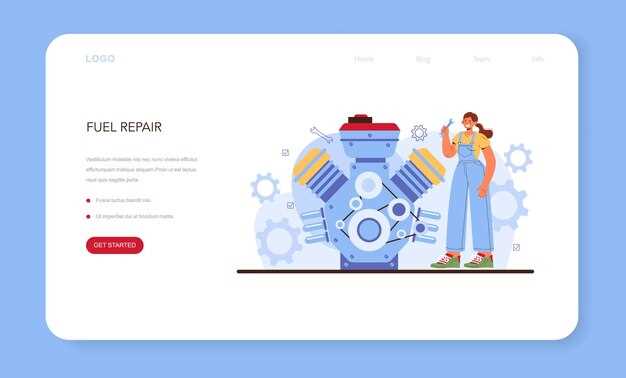
Engines are the heart of any vehicle, and understanding the common issues that can arise is crucial for maintaining their performance. By proactively identifying these engine problems, drivers can prevent minor concerns from escalating into significant repairs, ultimately saving time and money. Regular maintenance and awareness of potential issues can help ensure that your engine runs smoothly for years to come.
Some of the most prevalent engine issues include overheating, oil leaks, and unusual noises. Each of these symptoms can indicate underlying problems that, if left unaddressed, might lead to catastrophic engine failure. By learning how to recognize these warning signs early, you can take the necessary steps to diagnose and remedy the situation before it spirals out of control.
In this article, we will delve into the common engine problems, their signs, and how to effectively address them. With the right knowledge and preventative measures, you can enjoy a reliable driving experience and extend the lifespan of your vehicle’s most critical component.
Recognizing Early Signs of Engine Overheating

Detecting engine overheating early can prevent severe damage and costly repairs. Regular diagnostics can help identify problems before they escalate. Key indicators of potential overheating include rising temperature gauges, warning lights, and abnormal noises.
A significant rise in the engine temperature gauge is often the first sign of trouble. If the needle approaches the red zone, it’s essential to take action immediately. Additionally, the illumination of the overheating warning light on the dashboard indicates that the engine is running hotter than normal.
Strange sounds, such as bubbling or a boiling noise, may also suggest overheating has begun. These sounds often arise from coolant reaching its boiling point. Furthermore, steam or smoke emanating from the engine compartment signals a critical issue that requires urgent attention.
Another early warning sign is the presence of coolant leaks. Puddles of coolant under the vehicle can indicate a leak in the system, leading to insufficient coolant levels and ultimately overheating. Regularly inspecting the coolant reservoir for low levels or discoloration is a vital part of engine maintenance.
Lastly, pay attention to reduced engine performance. If the vehicle struggles to accelerate or shows signs of stalling, it could indicate overheating-related issues. Early recognition and timely diagnostics allow for corrective measures, safeguarding the engine’s longevity and performance.
Diagnosing Unusual Engine Noises and Vibrations
Unusual noises and vibrations from your engine can be significant indicators of underlying issues that may compromise performance and safety. Identifying these sounds early can prevent more severe damage and costly repairs. Here are key aspects to consider when diagnosing these symptoms.
Types of Noises: Different sounds can signify various engine problems. A knocking noise could suggest issues with bearings or connecting rods, while a rattling sound may indicate loose components or failing timing chains. If you hear a squealing noise, it often points to a worn serpentine belt or pulley issues.
Additionally, a hissing or bubbling sound might be linked to coolant leaks, suggesting potential overheating risks. Any grinding noise when starting the engine could signify starter motor problems, which require immediate attention.
Vibrations: Engine vibrations can also reveal serious issues. Unusual vibrations during acceleration could point to an unbalanced engine or a misaligned drivetrain. If the vibrations intensify at higher speeds, they may indicate worn-out engine mounts, which can compromise stability and lead to further damage.
To effectively diagnose these symptoms, conduct a thorough inspection. Listen for noises during various operating conditions and monitor vibrations while the vehicle is stationary and in motion. Note any changes in performance, such as reduced power or responsiveness, as these can accompany engine issues.
Document your observations and consult a professional mechanic if the symptoms persist. Early diagnosis and intervention can extend the engine’s life and enhance overall vehicle performance. Remember, your engine’s health is crucial for maintaining safety on the road.
Understanding Warning Lights and What They Indicate

Modern vehicles are equipped with a variety of warning lights on the dashboard designed to alert drivers to potential issues with the engine and other critical systems. Recognizing these indicators can prevent minor problems from escalating into major repairs.
The check engine light is one of the most vital alerts. It can signify various malfunctions, such as a loose gas cap, faulty oxygen sensor, or serious engine troubles. Regular monitoring of this light is essential, as ignoring it may lead to decreased performance and efficiency.
Another important indicator is the oil pressure warning light. This light suggests that the engine is not receiving adequate oil, which can lead to severe damage. If this light illuminates, it is crucial to stop the vehicle and check the oil level immediately.
The temperature gauge and its warning light indicate the engine’s cooling system status. An overheated engine can cause catastrophic failures, so prompt attention is necessary if the temperature rises above normal levels.
Additionally, the battery warning light signals potential electrical system issues. It may indicate a failing alternator, weak battery, or other electrical malfunctions. Addressing this warning early can prevent a breakdown.
Understanding these warning lights empowers drivers to take action before engine issues escalate, ensuring both vehicle safety and performance. Regular maintenance and attention to dashboard indicators can save drivers significant time and expense in the long run.

